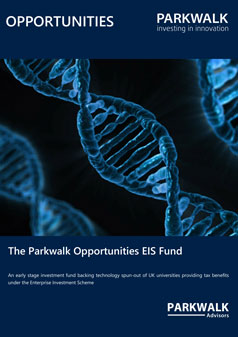|
We are delighted to announce that the Parkwalk-managed University of Oxford Innovation Fund III has closed an investment in Proxisense, a spin-out from...
|
|
|||||
 |
|
|||||
|
Dear , Proxisense spun out of the University of Oxford but licensed its IP from both the University and QinetiQ plc. The University IP is based on the work of Professor Kam Chana, the Technical and Commercial Director of the Oxford University Thermo-Fluid Laboratory. The latter opportunity arose when QinetiQ decided to exit this area and gives Proxisense the opportunity to generate near-term revenues from the sale of market tested sensors with established blue-chip customers in Power Generation, such as Alstom and Siemens. The Technology The proximity sensor technology utilises an eddy current sensor and enables the very accurate measurement of the position of components in real time. For example, the position of the tips of turbine blades and the monitoring of blade vibration whilst the systems are in use. This enables Proxisense to provide comprehensive health-monitoring technology which allows the user to detect degrading performance and the possible onset of component failure. This allows the user to change operating procedures, schedule component maintenance &/or replacement and reduce the risk of system non-availability or even failure. In turn that leads to longer useful lives for components and lower system costs. The Business Model Proxisense has been working with leading turbine manufacturers in the industrial and aerospace fields, including Alstom, Siemens and Rolls-Royce, on the product’s development. Through the association with Qinetiq there are over 200 tip timing systems in the field in low temperature applications and the lead unit has accumulated 200,000 hours of use. An improved version of the system is now ready for commercial sale in industrial applications and should be ready for sale to aerospace customers within 18 months. The fluid contamination systems are in development trials with the MoD, DSTL and Rolls-Royce. The technology is being applied in two systems, one to measure service wear particle contamination in lubrication oil systems and the second to monitor water contamination in aviation fuel storage and delivery systems. Growth Opportunity Currently tip timing and blade clearance measurement is only carried out on development engines as available systems are not reliable. The Proxisense product would open up a new market in this regard. The company believes that the potential market for industrial turbine systems is £50m p.a. with broader applications having the potentially to increase the market tenfold. Contamination of critical fluid systems is a significant issue and is managed today by one-off testing and remote sample analysis, which has problems with reliability, cost and asset downtime. The Proxisense offering would allow real-time, reliable monitoring of aviation fuel and of aviation lubrication systems. The company estimates the potential market at over £1bn p.a. The Team Mark Papworth, CEO, has been a FTSE company CEO and Executive Director for ten years and worked in the manufacturing and servicing of gas turbines for over 25 years. He was the CEO of Chemring Group and held senior leadership roles at Wood Group, Rolls-Royce and Alstom. Paul Vickery, Chairman, is an experienced Board Director with a background in venture capital. He has founded university spinouts from Oxford, Cambridge and Imperial and has experience launching businesses with sensor technologies. Professor Kam Chana, CTO and technical inventor, is the Technical and Commercial Director of Oxford University’s Osney Thermo-Fluid Laboratory. He has a long track record of engagement with the leading OEMs in the field. The Investment Case Proxisense’s products offer previously unavailable real-time monitoring of critical systems. The pricing model is such that it also offers rapid returns based on operational cost savings - the company estimates 2 years for return of capital – before taking into account avoiding the potential impact of catastrophic failures in critical systems. The company has a clear roadmap to commercial success with revenue expected in the first 12 months and a further funding round to accelerate growth in 2018/2019 |
||
|
|||||
|
||
|
|||||

